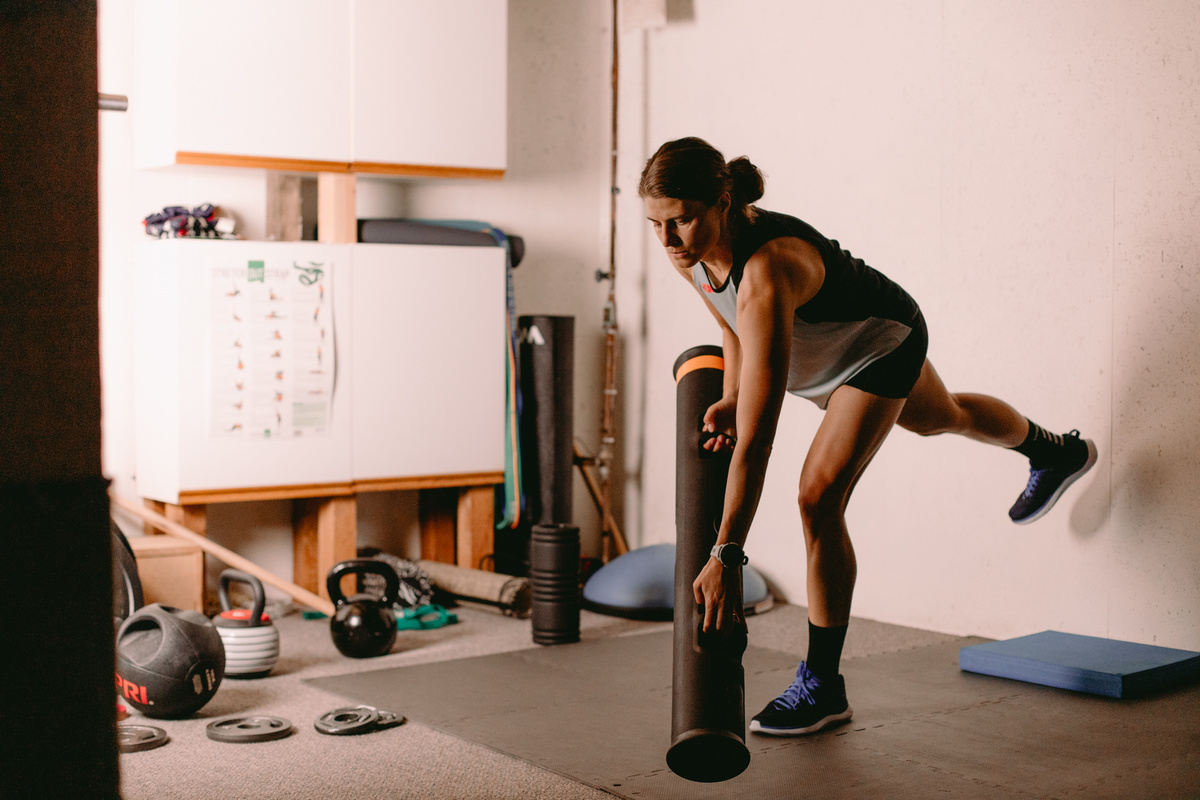It is common in the world of endurance sports for athletes to solely focus on the workouts we deem as important. These workouts would include sessions that are building their cardiovascular endurance since that is the only way to get better, right? For the time-crunched athlete who needs to skip a workout(s), more times than not the gym/supplemental movement training sessions will be the first to go. Next time you find yourself in this scenario, stop and think carefully about what type of session you may need at that moment in time.
More often than not, the answer for many of us is to drop the ride or run and
find a new way to move.
As endurance athletes, we are accustomed to moving in one direction: a straight line. When was the last time you can remember moving laterally? Though many can argue over who we deem as our own, “world’s best athletes,” the truth is, athletics is more than just a large engine. It is an ability to not only have large aerobic capacities but having athletic movement. This is what we should all strive to be, well-rounded athletes able to produce dynamic movements. When was the last time you found yourself kicking a soccer ball or playing pick-up basketball for fun? Think back to when you were a kid and experienced all types of movement through every one of your joints: hips, shoulders, knees, and ankles. It is these types of movements that can not only help us feel better but have a multitude of benefits beyond taking a mental break from our chosen endurance sport.
The main question is: how will adding in new movements help my performance? Let’s not just stop at performance, how will it help your longevity in your chosen sport? You probably know that to increase your fitness, you must stress your system. Your body learns how to adapt to this new stress and lays down new tissue that is robust enough to handle the demands you have placed on it. This principle is also true in the opposite fashion: use it or lose it. If you have not moved laterally in quite some time, the first time you try to do so may not only leave you feeling awkward in the movement, and potentially sore in the following days. Once you become accustomed to this new movement pattern though, you adjust and adapt. The key to adding in new movements is the frequency to which you do this. This is the same principle for building fitness: consistency is key.
Let’s take cycling for example. Sure the individual with the strongest legs and the biggest engine has a good shot at winning the race, but let’s say this athlete is severely limited in flexibility/mobility of their hips. This athlete won’t be able to access their glutes in order to produce the power they are capable of. Not only will their performance be hindered, but they are also risking putting themselves in a position where an injury is likely to occur due to poor biomechanics. While sometimes when we are in the moment and dedicated to our training, it is easy to chalk up skipping mobility work to fatigue. Unfortunately, sooner or later your body will begin to show signs of neglect and you won’t be able to produce the efforts you once did. It is better to start early and stay on top of healthy movement patterns before you find yourself in a long uphill battle back to health.
So what does movement look like for you? Movement can be different for everyone and can be based on your own individual needs. Perhaps start with some basics: grab your foam roller and get to work! Always keep in mind: consistency. Not everyone has time to roll for an hour each day but work in 5-15 minutes each day to hit the spots that are either bothersome or typically give you issues. Once you have loosened up problem areas, work on increasing your mobility with some dynamic movements that hit each of your major joints: ankles, hips, shoulders. Working on these movements even for a few minutes each day can break up stuck tissue and help you feel better whether on the bike, in the pool, or on the run.
Keep in mind that your body is connected and that one structure can affect another. Do you have a tight right shoulder that feels stuck? Perhaps if you’re a cyclist you may not think twice about this, but it is important to understand that your tight shoulder could ultimately impact your left low back due to overcompensation. This occurs more often than we think. Many times the areas that feel stuck or painful are not the areas of dysfunction. The more we can open up all of the “stuck” channels in our body, the better we will move regardless of what muscle groups our chosen sport may use. As the adage goes, “movement is medicine.”
If we are able to gain back mobility and flexibility within our body, the greater chance we have at increasing our longevity in sports. So go ahead and pick up a tennis racket, or a basketball and try something you have not done in a while. You may be surprised at how refreshed you will feel both body and mind.




